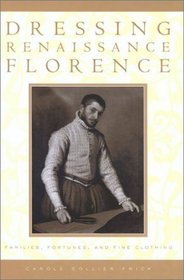Search -
Dressing Renaissance Florence: Families, Fortunes, and Fine Clothing
Dressing Renaissance Florence Families Fortunes and Fine Clothing
Author:
As portraits, private diaries, and estate inventories make clear, elite families of the Italian Renaissance were obsessed with fashion, investing as much as forty percent of their fortunes on clothing. In fact, the most elaborate outfits of the period could cost more than a good-sized farm out in the Mugello. Yet despite its prominence in both d... more »
Author:
As portraits, private diaries, and estate inventories make clear, elite families of the Italian Renaissance were obsessed with fashion, investing as much as forty percent of their fortunes on clothing. In fact, the most elaborate outfits of the period could cost more than a good-sized farm out in the Mugello. Yet despite its prominence in both d... more »
ISBN-13: 9780801869396
ISBN-10: 0801869390
Publication Date: 9/3/2002
Pages: 368
Rating: ?
ISBN-10: 0801869390
Publication Date: 9/3/2002
Pages: 368
Rating: ?
0 stars, based on 0 rating
Publisher: The Johns Hopkins University Press
Book Type: Hardcover
Members Wishing: 2
Reviews: Amazon | Write a Review
Book Type: Hardcover
Members Wishing: 2
Reviews: Amazon | Write a Review
Genres:
- History >> Europe >> General
- History >> Europe >> Italy >> General
- History >> Europe >> Italy >> Renaissance
- History >> World >> Renaissance
- Health, Fitness & Dieting >> Beauty, Grooming, & Style >> General




